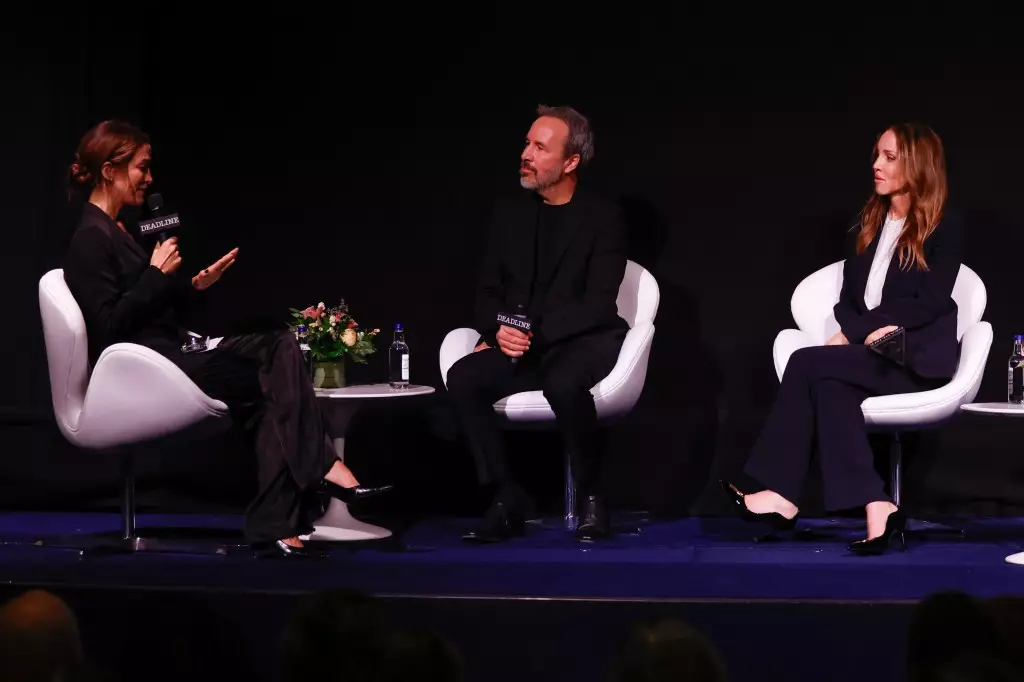The cinematic masterpiece “Dune: Part Two” has garnered immense acclaim, not only for its box office success but also for its profound themes and intricate storytelling. At a recent panel, director Denis Villeneuve and producers Mary Parent and Tanya Lapointe discussed the film’s deep ties to Frank Herbert’s original vision. In their conversations, they illuminated the multifaceted nature of the narrative, which intertwines elements of cautionary tales, love, and the complexities of power dynamics.
Villeneuve noted that he aimed to remain faithful to Herbert’s cautionary themes, emphasizing the importance of being vigilant about charismatic leaders and the potential perils of conflating politics with religion. This perspective is particularly relevant in today’s sociopolitical landscape, where we frequently witness the ascendancy of powerful figures who wield their influence under the guise of a divine mandate or ideological righteousness. The film’s protagonist, Paul Atreides, mirrors this delicate balance as he navigates his quest for vengeance against those who betrayed his family, all while seeking deeper truths within himself and the universe around him.
Mary Parent underscored this temporality of Herbert’s narrative, pointing out that the challenges humanity grapples with—such as issues surrounding power, environmental stewardship, and interpersonal relations—remain as pertinent today as they were when the original book was published in the 1960s. Through her observations, she conveys a potent message: that human nature is cyclical, stuck in a perpetual struggle between advancement and the fundamental aspects of existence that define us.
The Heart of a Love Story
Beyond the grand themes of power and danger, “Dune: Part Two” also shines as a poignant love story. The relationship between Paul and Chani serves as the emotional core of the film, with Parent emphasizing that the film captures young love amidst overwhelming circumstances. This heartfelt journey is not only relatable but adds an essential layer to the narrative, as these characters evolve in parallel to their chaotic surroundings. Villeneuve echoes this sentiment, articulating that the love story is a tragedy in itself—a narrative arc shaped by youthful passion overshadowed by the burdens of destiny and conflict.
The filmmakers engage in a detailed exploration of how young relationships can flourish even in turbulent times, providing audiences with a more nuanced understanding of love as a force that can both uplift and leave individuals vulnerable. In their romantic journey, Paul and Chani portray how companionship can provide grounding in a world fraught with moral and ethical dilemmas.
The Nature of Power
The film also intricately explores the nature of power, a theme prominently featured through the lens of female characters, particularly that of the Bene Gesserit. Lapointe shed light on the portrayal of these women, suggesting that power should not merely be viewed in instantaneous terms; rather, it is a function of long-term strategy woven through the fabric of history. This perspective challenges conventional narratives surrounding power dynamics in cinematic storytelling, advocating for a more layered and historical understanding of authority and influence.
Villeneuve’s commitment to providing female characters with their own agency is apparent throughout the film, creating a narrative that resists the tropes of male-centric storytelling. Lady Jessica, for instance, is portrayed as not merely a means to an end but as a fully realized character with her own motivations and struggles. This attention to character depth serves as a blueprint for more inclusive storytelling in future cinematic endeavors.
With discussions of a third installment already on the table, Villeneuve playfully hinted at the themes of war that would play a central role. His reflections serve as a reminder of the cyclical nature of conflict and reconciliation, raising eyebrows about how these themes would intertwine with the character-driven narratives established in the first two films. As audiences await this next chapter, it becomes evident that “Dune: Part Two” encapsulates more than just thrilling visuals; it is a layered examination of love, power, and the human condition—one that invites viewers to reflect on their own realities amid the vast sands of Arrakis.


Leave a Reply